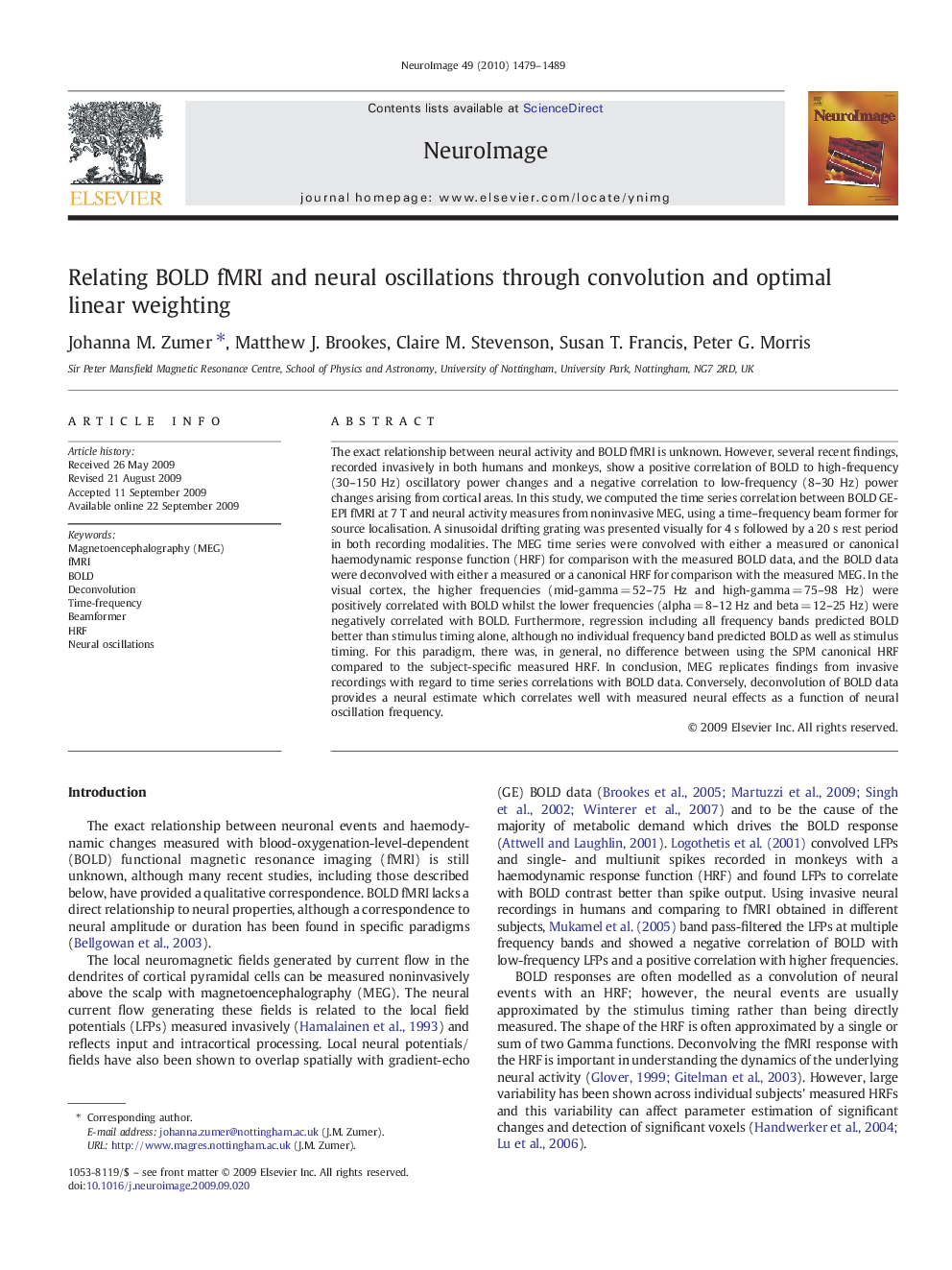| کد مقاله | کد نشریه | سال انتشار | مقاله انگلیسی | نسخه تمام متن |
|---|---|---|---|---|
| 6037975 | 1188792 | 2010 | 11 صفحه PDF | دانلود رایگان |
عنوان انگلیسی مقاله ISI
Relating BOLD fMRI and neural oscillations through convolution and optimal linear weighting
دانلود مقاله + سفارش ترجمه
دانلود مقاله ISI انگلیسی
رایگان برای ایرانیان
کلمات کلیدی
موضوعات مرتبط
علوم زیستی و بیوفناوری
علم عصب شناسی
علوم اعصاب شناختی
پیش نمایش صفحه اول مقاله

چکیده انگلیسی
The exact relationship between neural activity and BOLD fMRI is unknown. However, several recent findings, recorded invasively in both humans and monkeys, show a positive correlation of BOLD to high-frequency (30-150 Hz) oscillatory power changes and a negative correlation to low-frequency (8-30 Hz) power changes arising from cortical areas. In this study, we computed the time series correlation between BOLD GE-EPI fMRI at 7 T and neural activity measures from noninvasive MEG, using a time-frequency beam former for source localisation. A sinusoidal drifting grating was presented visually for 4 s followed by a 20 s rest period in both recording modalities. The MEG time series were convolved with either a measured or canonical haemodynamic response function (HRF) for comparison with the measured BOLD data, and the BOLD data were deconvolved with either a measured or a canonical HRF for comparison with the measured MEG. In the visual cortex, the higher frequencies (mid-gamma = 52-75 Hz and high-gamma = 75-98 Hz) were positively correlated with BOLD whilst the lower frequencies (alpha = 8-12 Hz and beta = 12-25 Hz) were negatively correlated with BOLD. Furthermore, regression including all frequency bands predicted BOLD better than stimulus timing alone, although no individual frequency band predicted BOLD as well as stimulus timing. For this paradigm, there was, in general, no difference between using the SPM canonical HRF compared to the subject-specific measured HRF. In conclusion, MEG replicates findings from invasive recordings with regard to time series correlations with BOLD data. Conversely, deconvolution of BOLD data provides a neural estimate which correlates well with measured neural effects as a function of neural oscillation frequency.
ناشر
Database: Elsevier - ScienceDirect (ساینس دایرکت)
Journal: NeuroImage - Volume 49, Issue 2, 15 January 2010, Pages 1479-1489
Journal: NeuroImage - Volume 49, Issue 2, 15 January 2010, Pages 1479-1489
نویسندگان
Johanna M. Zumer, Matthew J. Brookes, Claire M. Stevenson, Susan T. Francis, Peter G. Morris,